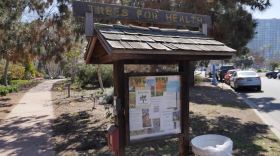San Diego County fire and safety officials have new tools to give residents more precise evacuation alerts during emergencies.
The software, called Genasys, allows officials to map evacuation zones based on things like population density, neighborhoods, nearby roads and geographic features. Then, they can send out evacuation alerts for specific areas.
Dave McQuead, fire chief at Rancho Santa Fe Fire Protection, said that means they can evacuate an area more strategically.
“This becomes more systematic so that we’re not creating congestion if we had just blanketed out a large evacuation plan,” McQuead said.
Jeff Toney, director of the San Diego County Office of Emergency Services, said it will also let officials lift evacuation orders as individual neighborhoods, streets or buildings become safe.
“The new zones will limit unnecessary evacuations and make repopulation more efficient to get people back into their homes sooner,” he said.
The new maps are part of the county’s existing emergency alert system. Residents can sign up for alerts to their cell phones or email at alertsandiego.org or download the SD Emergency app.
As peak fire season begins, the California Department of Forestry and Fire Protection is suspending outdoor residential burn permits starting Saturday. That means residents can’t burn branches, leaves or other debris.
Cal Fire recommends clearing all dead or dying vegetation at least 100 feet around homes and other structures.







